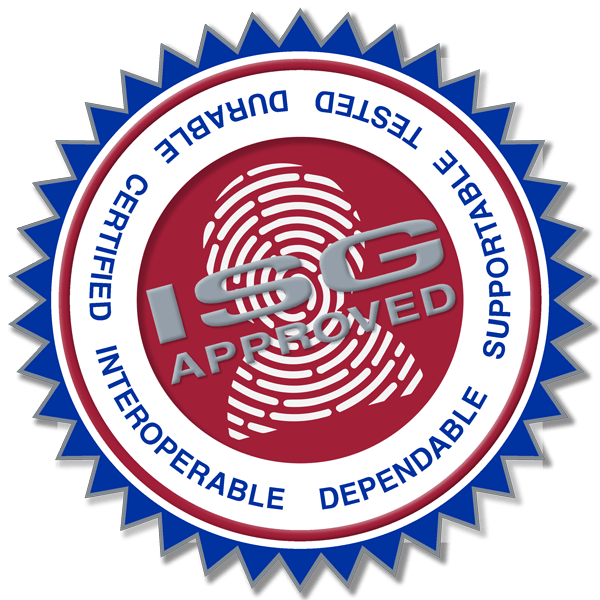Fake IDs are Still a Campus Security Issue
Card security is an understandable concern for many public and private organizations, and the use of security features to detect fraudulent cards is increasing everywhere. An ID card is the visual verification that the person is supposed to be there, and is who they say they are, so it needs to be secure and easily validated.
Higher Education may be lagging behind other vertical markets in the implementation of card security features, but should not be. No institution wants to be involved in an incident where a fraudulent card of your school is used in something illegal or unethical. Other organizations accept student IDs as a valid form of identification, like voting, so it is essential for your cards to be legitimate. In states where identification is required to vote, a student ID is accepted as proof of identity. It makes a lot of sense to have some verifiable protections on your issued cards.
The widespread availability and common knowledge of card printers makes it easy for others to duplicate the “look” of your card. In addition, the internet is full of “fake id” sites where you can purchase fraudulent university student ID cards. Here is just one example: http://idviking.com/product-tag/fake-student-card/.
The presence of these sites raise one question.: why would these sites exist if there is no value to having a fake ID of your institution?
It is important to protect your ID card by adding security features you can manage and afford. It just makes sense. There are a wide variety of card security options available today, and many are not expensive. To start, below are some considerations.
Considerations
- Do you want your card security features to be overt, covert, or both?
- Should you add two card security features, one in card manufacturing and one in the issuance process?
- What is the cost per card for these features?
- Does the addition of a feature during card manufacturing affect the availability and lead time of the card stock?
- Does the addition of a feature during card issuance affect the cost per card or time required to print the ID?
It is important to thoroughly consider the options for both aspects of card security, during the manufacturing process for the stock for fixed security items, and during the actual card issuance process, where variable images and information, as well as other fixed items, could also be added to the finished ID card.
Card Manufacturing
There are a host of security features that can be added to the card body during the manufacturing process, many of which may be proprietary to a specific manufacturer. However, there are at least 2 features that are common for nearly all manufacturers;
UV Ink
Most people know that UV printing appears when held under a black light. Think credit cards and driver licenses as examples. This, or course, requires use of a simple, low cost black light to verify. If you are currently using preprinted cards, the addition of UV ink should be easy and inexpensive.
Holographic Foil
Custom holographic foil can also be added to your card stock. This is a strong visual indication of the card’s authenticity. The foil can be applied at the card factory by being embedded under the card lamination, or applied on top of the lamination. Many different shapes and sizes are available. You can even order holographic stickers and apply them to the cards as they are issued. By and large, the use of holographic foil is reasonably priced.
Note: There are a variety of other secure printing options available from various card manufacturers. Examples are micro text, guilloche patterns, lenticular imagery and opacity marks. However, UV inks and holographic foils are the most popular.
Card Issuance
Several security options are available on card printers for application during the issuance process. What you choose will depend on the printer technology you use (direct-to-card or retransfer), your desire (overt or covert), and your budget (of course).
UV Fluorescing Ribbons
Similar to printing of UV ink at the factory, most desktop ID card printers now offer UV fluorescing or UV ink panels on color ribbons, allowing for the printing of static or variable images and information in an ultraviolet layer that can be seen with use of a black light. This is an extremely inexpensive way to add easily verifiable information on an ID card.
It is important to note that not all card printers can provide the same level of quality, as some can only print a static image or text field that is common to every issued card. Using a variable field, such as person’s photo, for the UV image, is much more secure.
Holographic Laminate
Custom or generic holographic laminates can be used on most ID card types. The holographic image can see viewed by the human eye, without the need for a special tool. Traditionally, custom holographic laminates carry a high minimum order, making it a secure option for only large issuers, as features like micro text or UV layers can also be added to it. Generic holographic laminates add some security, like keeping data and images underneath from being altered on validly issued cards, but those laminates are available on the open market, thereby making their use less secure,. Most printer models with lamination capabilities offer this option.
Micro Text Printing
With the increase of the availability of 600 dpi card printers, the ability to print true micro text is now a realistic option. Type fonts as low as 2 points can be used, allowing you to print a very small field of static or variable data that can be confirmed when viewed under a magnifier. 600 dpi printing is currently available only on certain retransfer card printers, two of which are offered by your local ISG dealers: the ISG PEAK RTX6000, and the new Datacard CR805.
Tactile Impression
This feature is available only on certain Entrust Datacard printers, such as the CD800 CLM. It adds security you can both see and feel, by using a custom die attached inside the card printer’s lamination module. The die can be something like a static security seal, or even your own institution’s logo. The die impresses into the card surface during the lamination process. The result is an impressive tactile security feature that is quite affordable.
Overt vs. Covert
The card security features you choose may be dependent on whether you want overt or a covert security.
- Overt security features can be seen and/or felt. Examples are holographic foils or holographic laminates, and Tactile Impression.
- Covert security features require a “tool” to verify. Examples include using a back light to see UV Printing, or a magnifier to see Micro Text Printing.
Do I need a card security feature if my ID cards are always scanned?
This is a good question, but does not alleviate the need for good card security features. It is probably difficult to have a card reader on hand for every single event or purpose. In addition, traditional card technology such as magnetic stripes or proximity cards can be easily cloned. If a person goes to the trouble to get a fake ID card, they probably have the desire to create it with as much valid data and imagery as possible. Again, there are other uses for fraudulent ID cards outside of your control, like for voting, underage drinking, or setting up false identities.
What are other institutions using?
We estimate the use of card security features to be low in the higher education market today, at less than 10%, with two of the more common features used being holographic lamination and tactile impression. However, with the availability of new 600 dpi retransfer printers, we are seeing some movement toward the use of UV Fluorescing ribbons and micro text printing.
What is recommended?
In a perfect world, using one static overt feature and one covert feature, using variable images or data, provides solid security. If you only want to implement one feature, then an overt feature is likely your best option, because no special tool would be required to see it.
Two overt options that are reasonably priced include Datacard’s Tactile Impression (during card issuance), or adding a Holographic Foil (during card manufacturing). The addition of Holographic Foil means you obtain tamper-resistant, high quality, and easily visible security.
Contact us today for more information about the solutions mentioned here.


